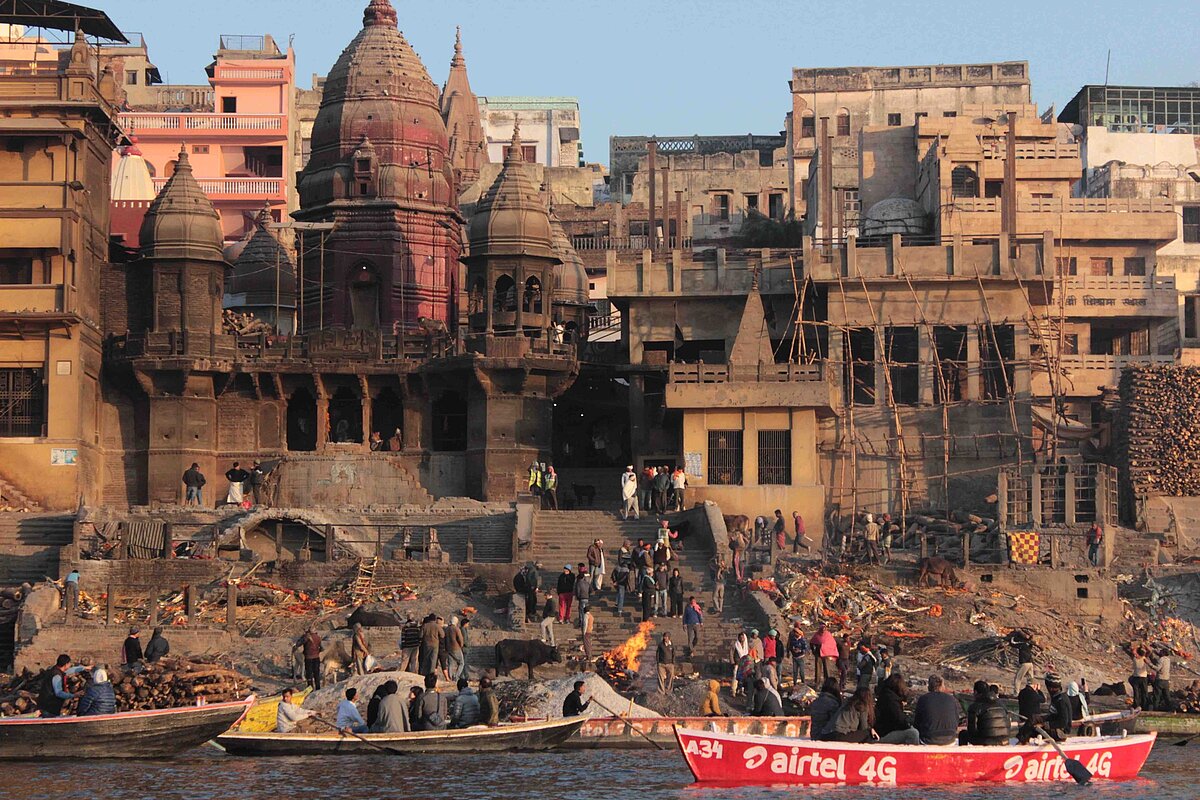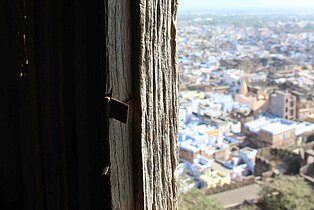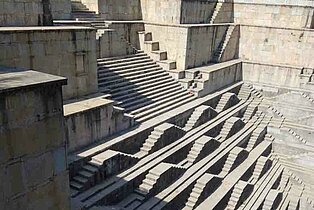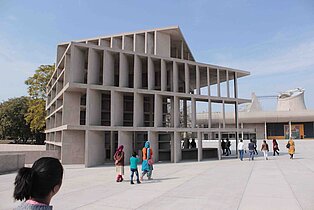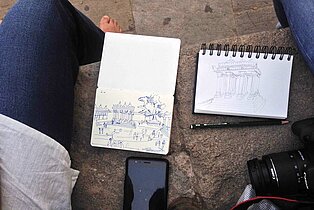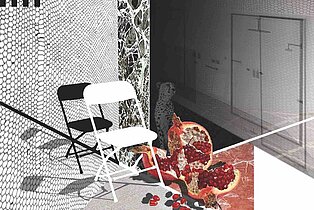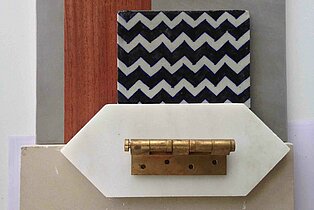Interior Scholarship | Blog 01/2018 | Nina Kaul
It is the end of May, and I am sitting in an aeroplane flying from Ahmedabad to Hamburg via Dubai. In the cargo hold, there are 29 kg that comprise things from home, spectacular impressions, memories, a mosquito net, a dash of cinnamon and several items which I have either found or been accompanied by over the last five months. My Indian adventure is now over. When in India, time seems to dwindle away more quickly when you work full-time and travel in every spare moment you get. I am very thankful that my internship provided me with such opportunities.
My first trip took me to Karala in Southern India. The journey started in Kovalam and led to Varkalla, which is where I spent my first Christmas away from home. Following several stops, at the end of January I travelled via Kota, which is the origin of the popular Indian building material Kota stone, to Bundi in Rajasthan. This is a city whose architecture is interspersed with blue pigmentation. On the slope of a hill sits Garh Palace, featuring numerous frescos dating from the 17th to the 19th century which showcase various mythological themes, as well as the history of the city and life in the court. Several images provided interesting architectural perspectives via ground plans and views.
In February, I travelled to Chandigarh, a "planned" city which was designed in the middle of the 20th century according to plans from Le Corbusier. The city was very different to the other areas of India that I had previously visited. It is meticulously divided into various sectors, is clean and I came across few people amongst the area's orderly traffic. I visited the "capitol complex" featuring the Palace of Justice and "open hand" monument as well as the art gallery. Corbusier used the local climatic conditions to help shape his architecture. The "Tower of Shadows" was created as an artistic study of the sun. It blocks out the sun from all sides and at all times of the day, but still allows enough light and warmth to penetrate the building in order to generate an open form of architecture in a warm country. This entire city looks very surreal and almost eerie, and rather akin to a trip back in time to the fifties.
The next destination on my list was India's captial, Delhi, and then the Taj Mahal in Agra.
Finally, I visited a very special place called Varanasi, one of the oldest cities in India and the holiest city of Hinduism. In addition to the mosques, temples, stepwells and private residences that I just had to visit, there was also one particular architectural highlight located directly in Ahmedabad: Balkrishna Doshi was the first Indian to receive the Pritzker Prize for his life's work. The 90-year-old architect worked closely with Le Corbusier and Louis Kahn and is known for his social housing construction projects.
The work at Blocher Partners on the 11th storey of Mondeal Square became routine after several weeks. Large-scale construction of malls, private residences, office buildings and resorts is planned here. Everything is done in close cooperation with the partner office in Stuttgart. I was tasked with the interior design concept for a playschool project, designing a reception desk for the Goethe Institute in Kolkata, planning a retail store in an extremely limited space, selecting furniture, materials and colours for private residences as well as creating and giving customer presentations. As modern expressions or specialist terms in India usually only exist in English, I was able to understand the key information from discussions or negotiations in Hindi to a reasonable extent. However, English was spoken in the office for the most part.
Saying goodbye to my colleagues, who had become close friends of mine, as well as all the people who had accompanied me during my hectic routine, was very difficult to do. The hospitality and willingness to help I encountered in the office meant that I was looked after around the clock. I never for one moment felt alone, nor uncomfortable as a woman travelling alone in India. I have not yet explored everything in India, and I hold the people and the daily chaos in the streets very dear - I will definitely return at some point. Perhaps just to travel, to work or to find a topic for my master thesis.
Back in Germany, the new semester of my master's studies is now underway at Burg Giebichenstein. As a warm-up activity, we are developing different types of wall designs which I am visualising using wall elements and collages. The aim of the semester is to create a hotel room in the airport hotel in Leipzig.
About Nina Kaul
Nina Kaul was born and raised in Braunschweig, Germany. While she was at school, her artistic appetite was whetted by her participation in the "art for students" talent promotion. After graduating from high school in 2011, she embarked upon her interior design studies at the Burg Giebichenstein art university, Halle (Saale). Thanks to her university course as well as various internships before and during her studies in a carpentry workshop, an interior design office, at Volkswagen Immobilien Marketing, as an artist and as a production design assistant, Nina was able to improve her skills in numerous different areas. In 2016, she designed a stand for the Premium Fashion Week Berlin and then implemented it. In 2017, she provided a logo design for a small Hamburg-based company.


